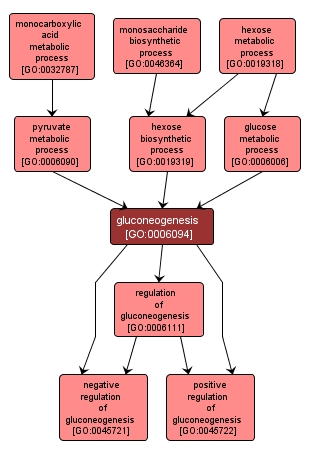GO TERM SUMMARY
|
| Name: |
gluconeogenesis |
| Acc: |
GO:0006094 |
| Aspect: |
Biological Process |
| Desc: |
The formation of glucose from noncarbohydrate precursors, such as pyruvate, amino acids and glycerol. |
Synonyms:
- glucose biosynthetic process
- glucose biosynthesis
|
|

|
INTERACTIVE GO GRAPH
|














